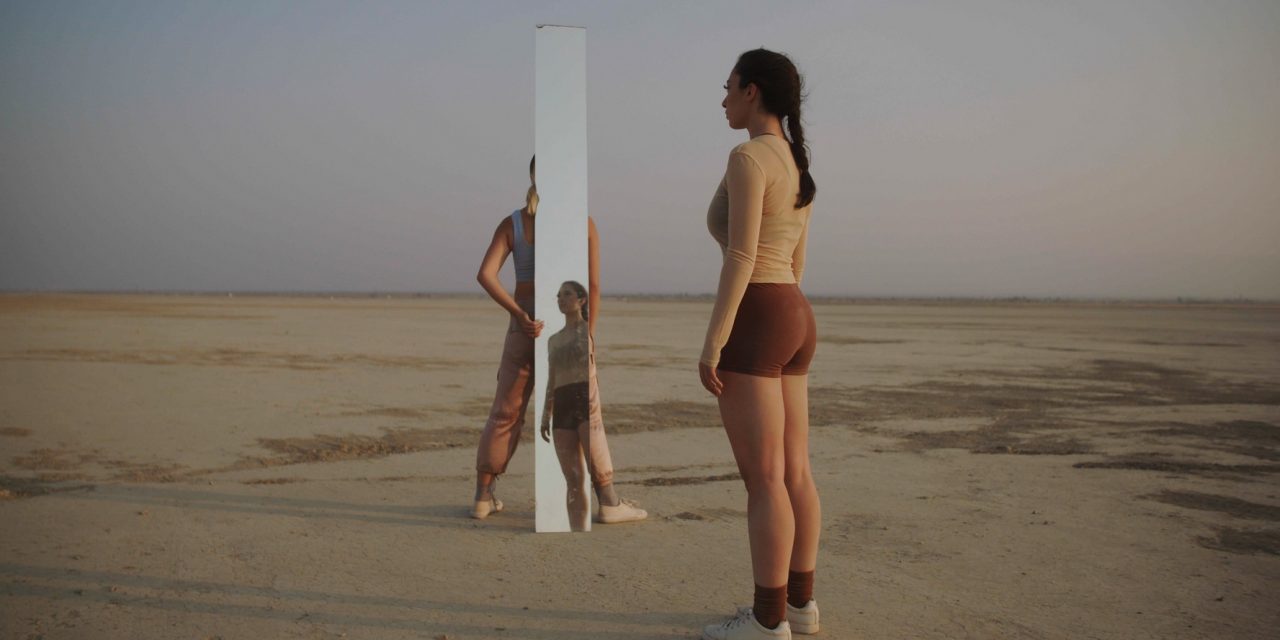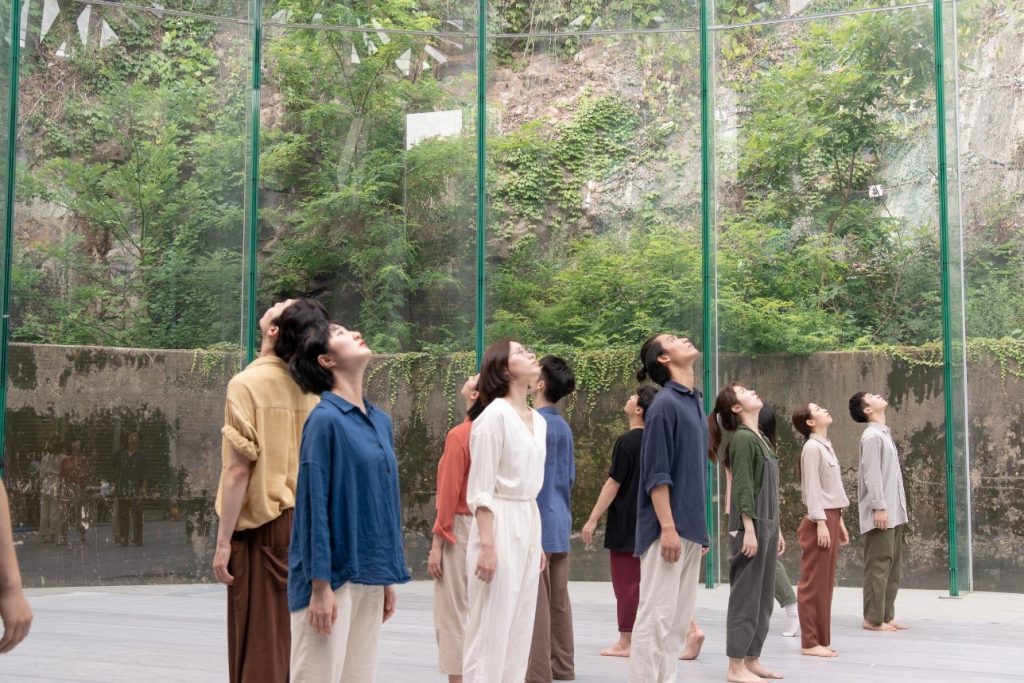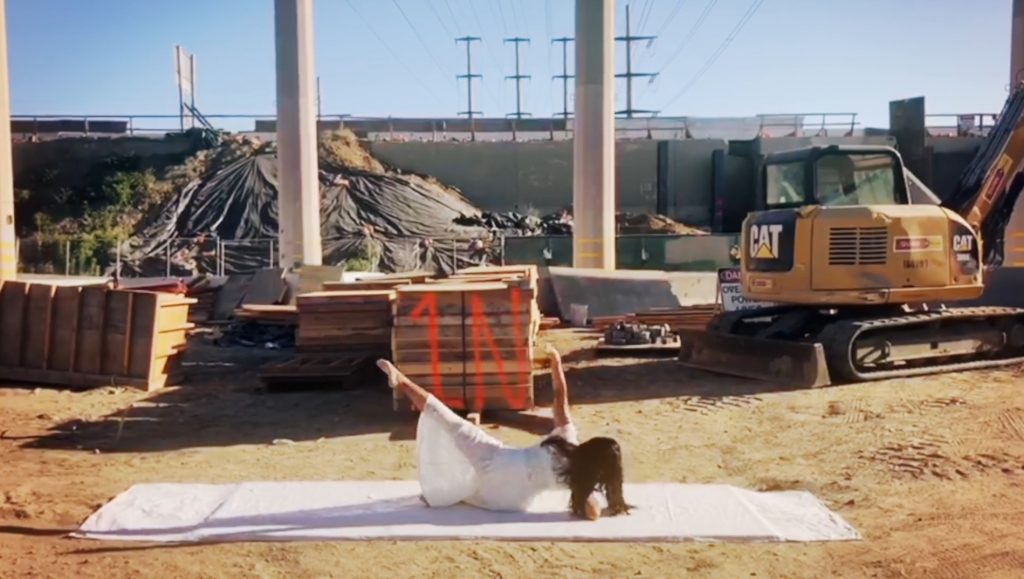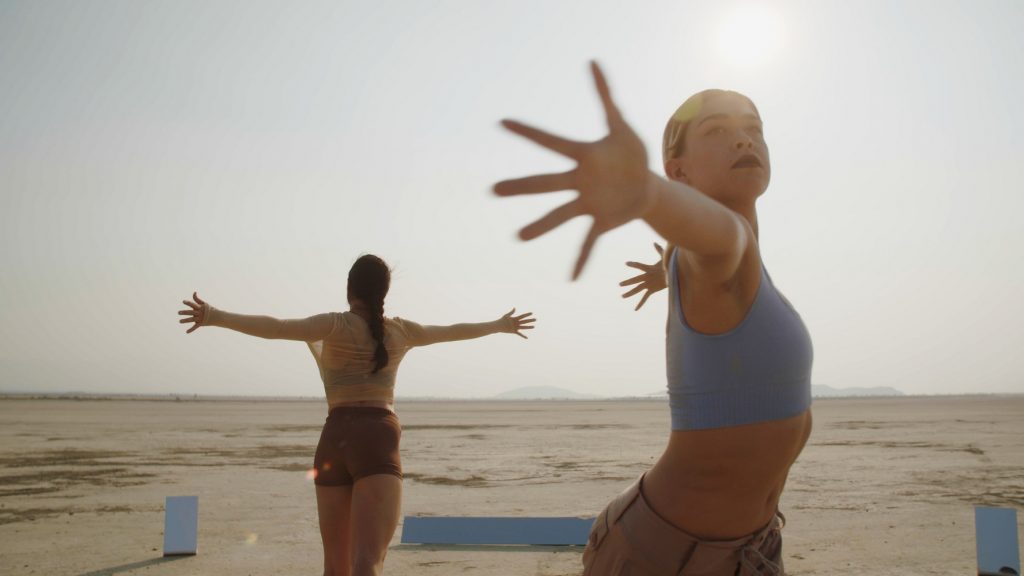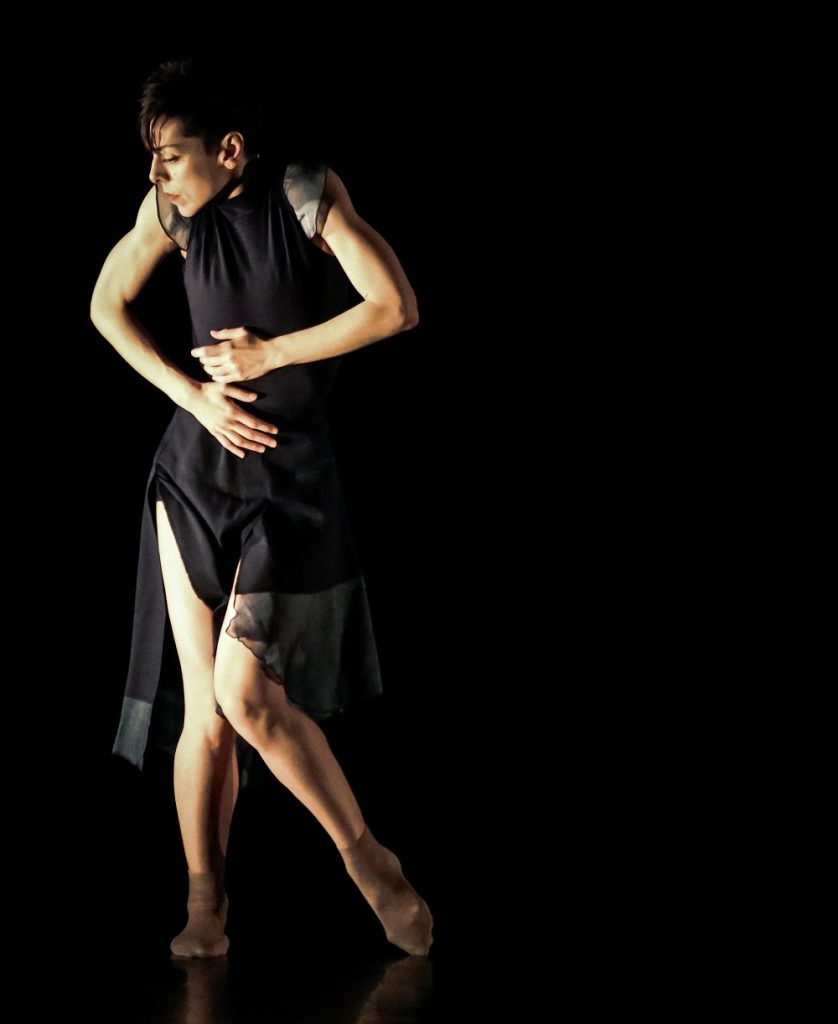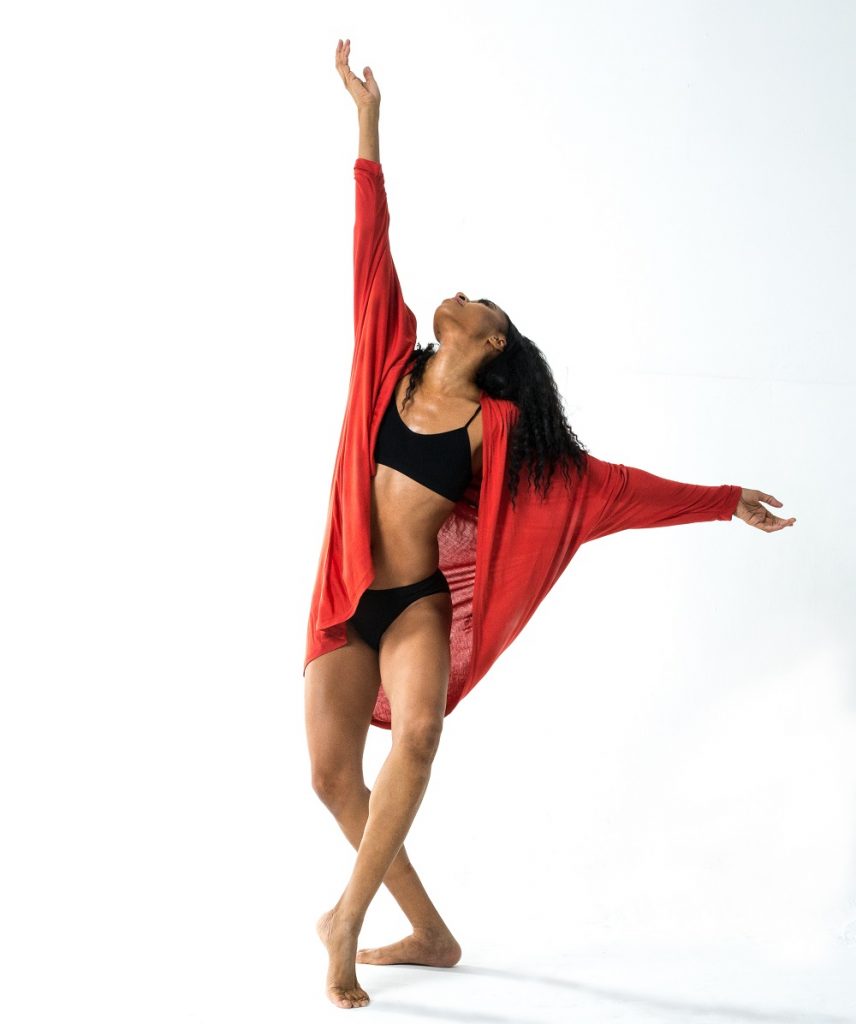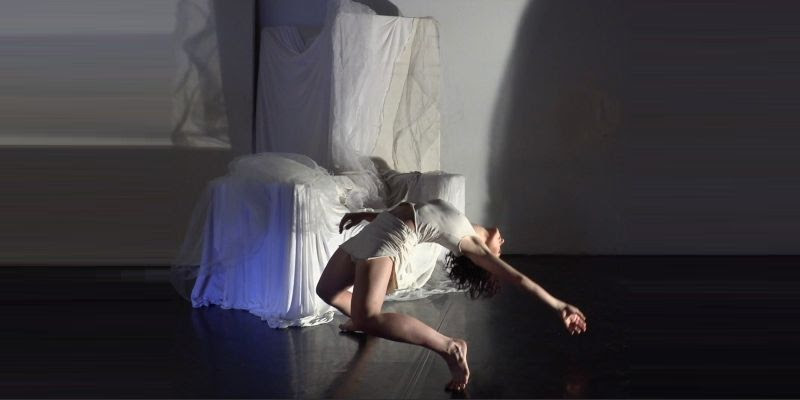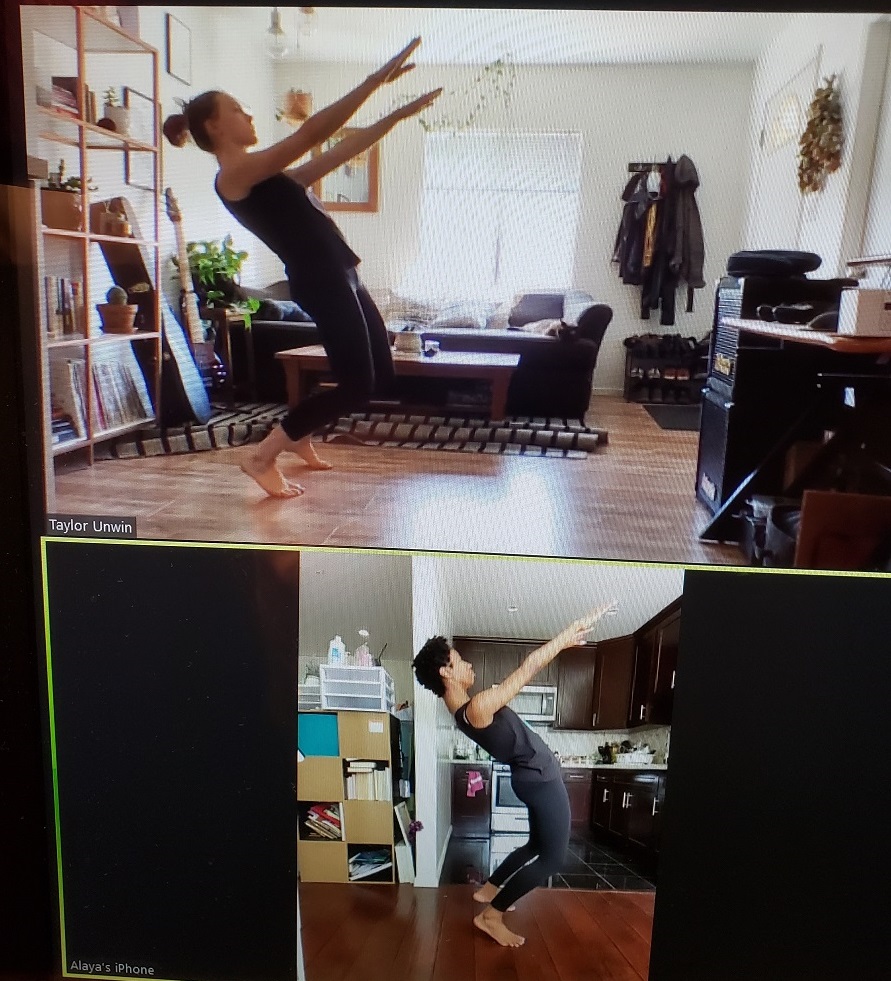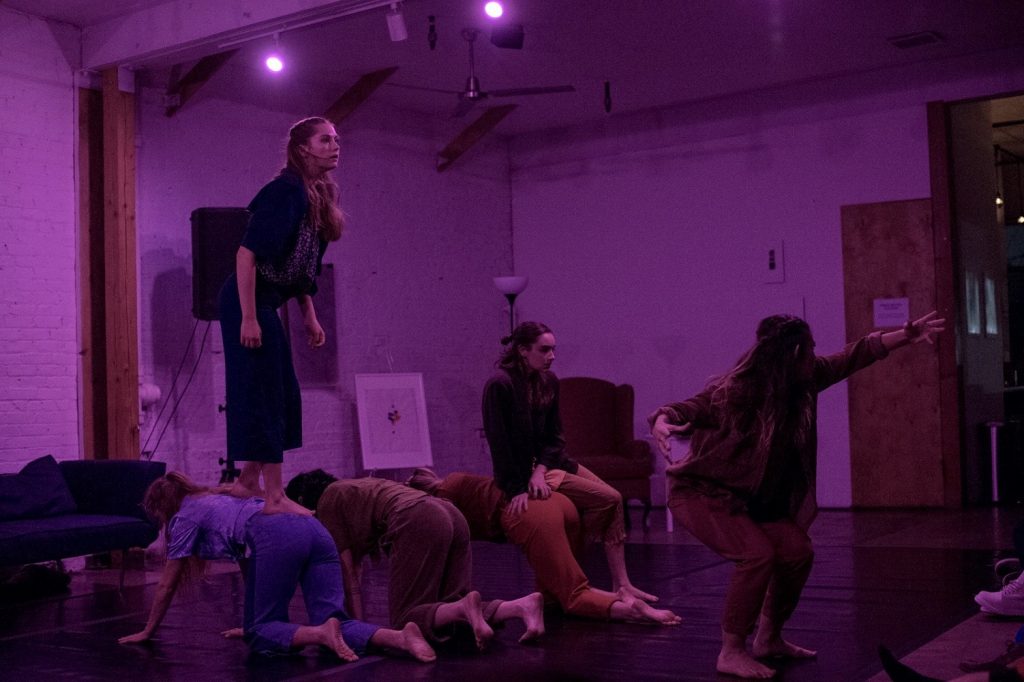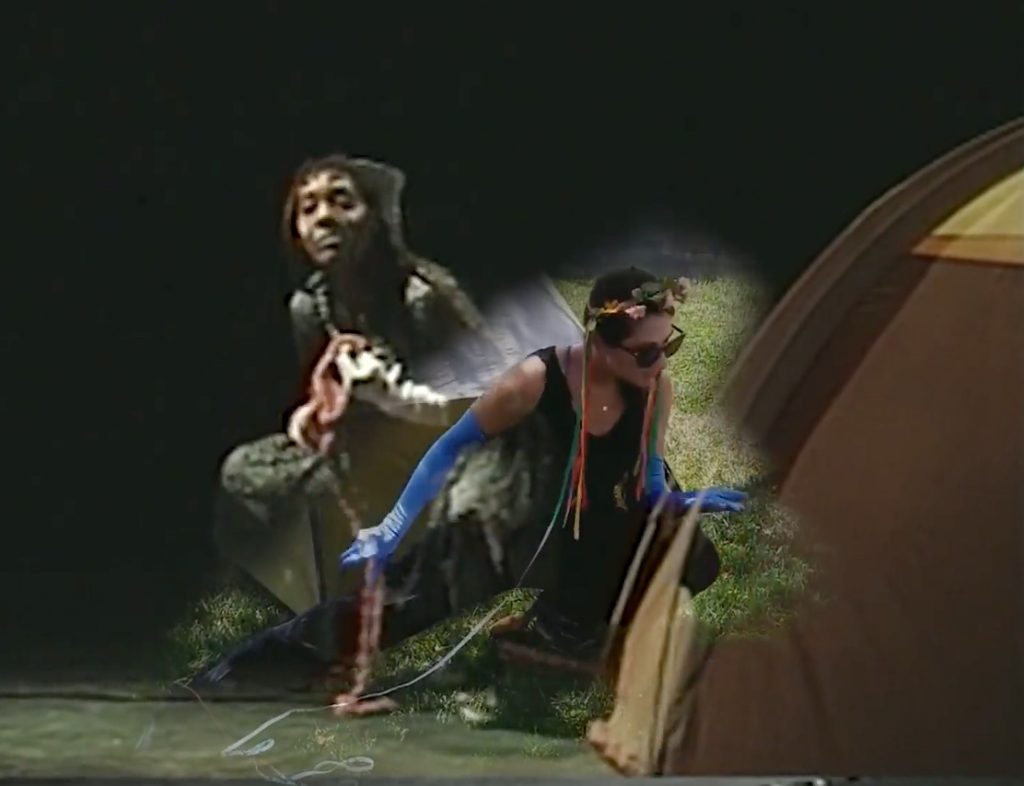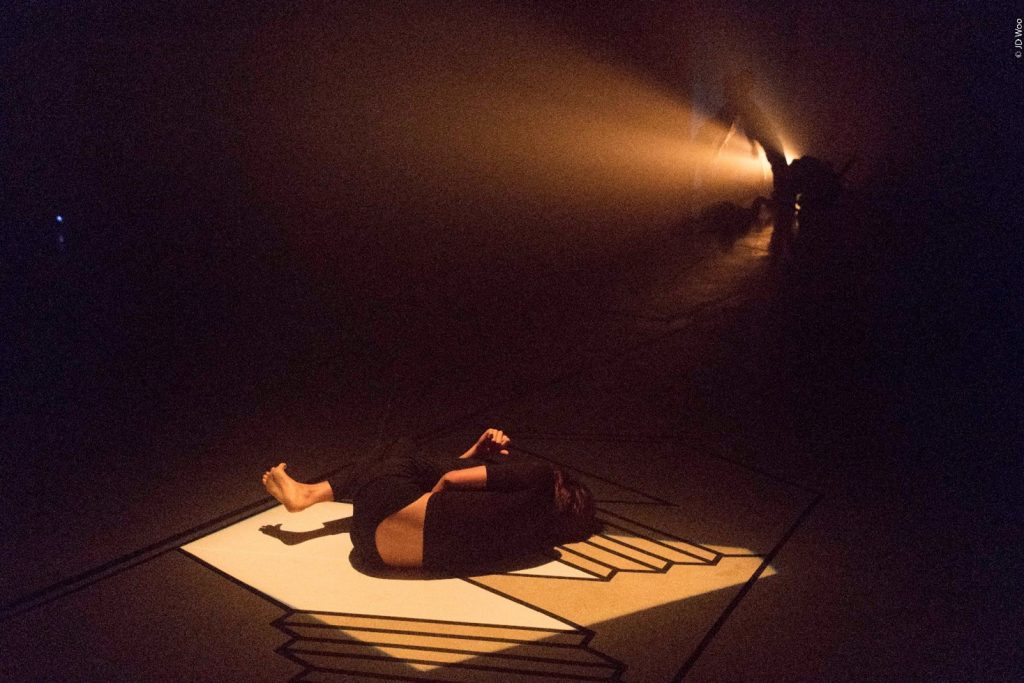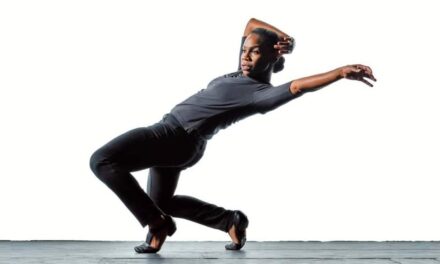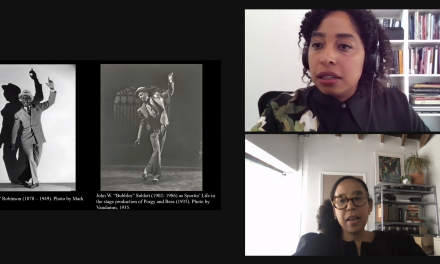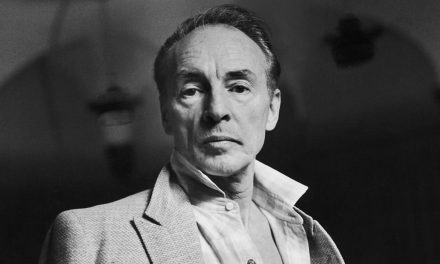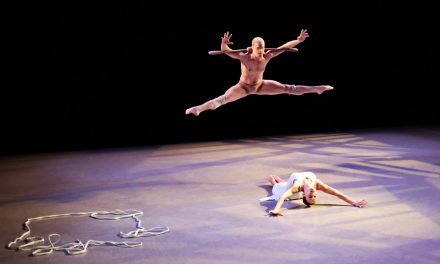The Covid-19 pandemic has forced what has been described as “a new normal” upon the entire world. For the dance profession, it has forced choreographers to create works for camera, revisit works captured on video or film, and to create, rehearse and record dances on Zoom, or working outdoors while following the CDC safety guidelines. Week three of the LA Dance Festival 2020 (LADF 2020) is a showcase for all of those methods and proof that the creative mind will not be silenced.
LADF 2020 was co-produced by Brockus Project Dance, Deborah Brockus as Executive Director and The Luckman Fine Arts Complex at California State University, Los Angeles , Wendy Baker Executive Director. It was also made possible in part by the Department of Cultural Affairs, City of Los Angeles in Promotional Partnership with the Korean Cultural Center, Los Angeles. Week three’s performance featured works by choreographers Charlotte Katherine Smith, Ju-Bin Kim, Nannette Brodie, Camryn Eaks and MarieElena Martingano, Seda Aybay, Quela, Lula Washington and Tamica Washington-Miller, Deborah Brockus, John Castagna, Jesse Lee Thorne, Louise Reichlin, and Hyun Sun Kim.
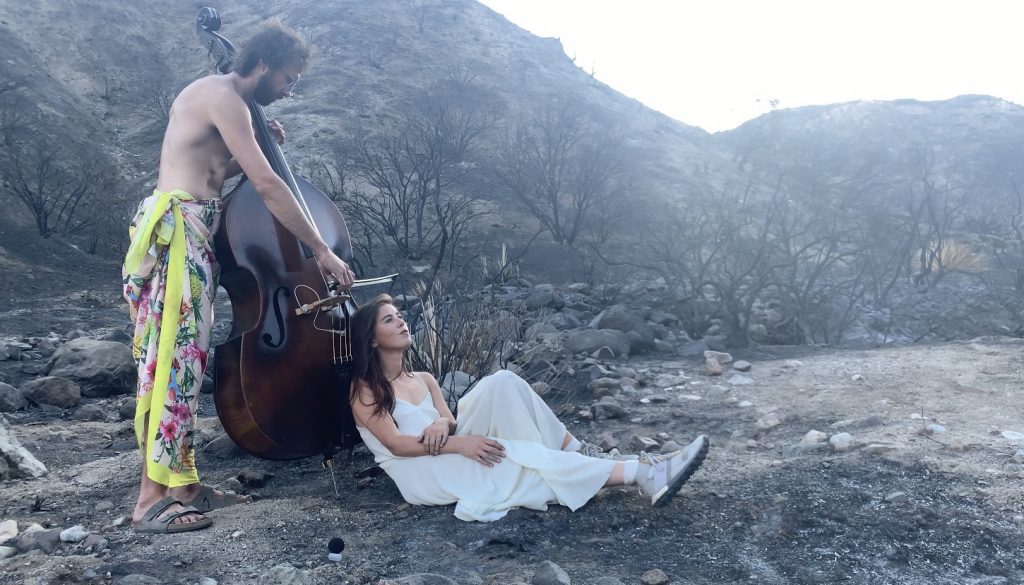
Zac Greenberg and Charlotte Katherine Smith in “Pyriscence” choreography by Charlotte K. Smith – Photo courtesy of LADF
Pyriscence was choreographed and danced by Charlotte Katherine Smith with a mournful score and on-screen performance by Composer/Upright Bass player Zac Greenberg. One of the best explanations of the word Pyriscence that I found was “Pyriscence can be understood as an adaptation to an environment in which fires are regular, and in which post-fire environments offer the best germination and seedling survival rates”. Smith speaks about how many of us feel as if the entire world is on fire, driving us inside, and leaving us to look inward for a path to renewal.
Smith chose a burned-out landscape to film Pyriscence, dressed in a long white dress, signaling purification, with Greenberg wearing a floral patterned sarong style skirt, a nod to rejuvenation. Smith’s movement is primarily slow pace, restive, reflective and loving. Throughout this beautiful film she ponders the situation around her, longs for what has been lost and how to move forward. Pyriscence was directed by Angeline Herron, the stunning cinematography was by Joseph Cicio; Edited by Scott Kelly; Colorist was Jose Hernandez; and Costumes by Diana MacNeil.
Filmed on location at Jebu Island, Korean choreographer Ju-Bin Kim has produced a wonderful work titled When We Face Each Other, a work which premiered live at the 2019 Seoul International Dance Festival and then adapted for film. Kim writes that his work is a fusion of traditional Korean dance and modern dance styles. He has a special talent for creating strong arm, head and torso movement phrases with big, sharp and sudden leg movements that appear from nowhere. The dance feels like an internal investigation of a wide range of feelings and/or emotions that humans feel when meeting someone new and what goes though our minds while deciding if we want to meet and interact. Everything about this film is a joy to watch.
The cast of includes Heo Miso, Kim Hyun Woo, Kang Minji, Park Chul Soon, Seon Eunji, Oh JiEun, Lee HaeJun, and Hwang SeoYoung. When We Face Each Other was directed by Jude Chun, Music by Joe Layne.
Nannette Brodie is the choreographer for Her Intercession with dancers Jana Taylor, Rebecca Martin, Jennie Sustaita, Stephanie Maxim, and Erica Vallalpando. Inspired by the music of Einaudi as performed by Daniel Hope, Her Intercession is a series of lyrical sometimes separated by connected solos performed outside and indoors. The movement is joyous and the dance style is modern. Brodie takes on a visual journey that includes forest areas, construction sights, inside a dancer’s home, a grassy area outside an apartment complex and more. It is indeed a visualization of the music, yes but also presents a strong emotional desire for someone to intercede and return to the ability to fly free.
Camryn Eaks and MarieElena Martingano have artfully combined a desert setting, mirrors and movement that is spacious but near in proximity to create Syncing, a dance film that highlights both the physical and creative loss dancers feel from not being able to work together in a studio, but also the loss of being together socially. The desert represents the loss and the mirrors, one long and narrow one, and two small square ones, abstractly take us into the dance studio. Performed by Eaks and Martingano, the movement and the sections are constantly being severed via the editing, giving one the feeling of incompleteness. The beautiful cinematography is by Seannie Bryan, with a non-descriptive electronic sound design by Danny Hynds.
Seda Aybay was born in Turkey and now lives and works in Los Angeles as the Artistic Director/Choreographer of Kybele Dance Theater. Yol was choreographed and performed beautifully by Aybay to a wonderful score by Turkish composer Mecan Dede. The pandemic has caused many of us to become self-examining or reflective. Yol is Turkish for “path” or “way”, and Aybay’s solo takes the viewer on a path through the performer’s inner thoughts and emotions. Filmed in a foggy haze and occasionally making use of a large mirror to highlight the real and inner selves, Yol is mystifying, visually stunning and powerfully performed. The film was directed by Aybay and Carl Owens who also acted as Cinematographer.
The set of Breonna Taylor consists of a mattress with beautiful purple sheets and pillowcase lying on the ground in front of a large mural that has the face of a beautiful black woman and hundreds of names of black men and women murdered by police hand written around her. Choreographed and soulfully performed by Quela, Breonna Taylor was choreographed to the poetry of Jeffrey Martin and music by MTG360. Quela occasionally visualized the poetry, but she did not depend on the text to make her point. The dancing is as strong as the powerful text of protest, but Quela’s movement speaks to the gentler person that was Breonna Taylor, making her death feel even more senseless.
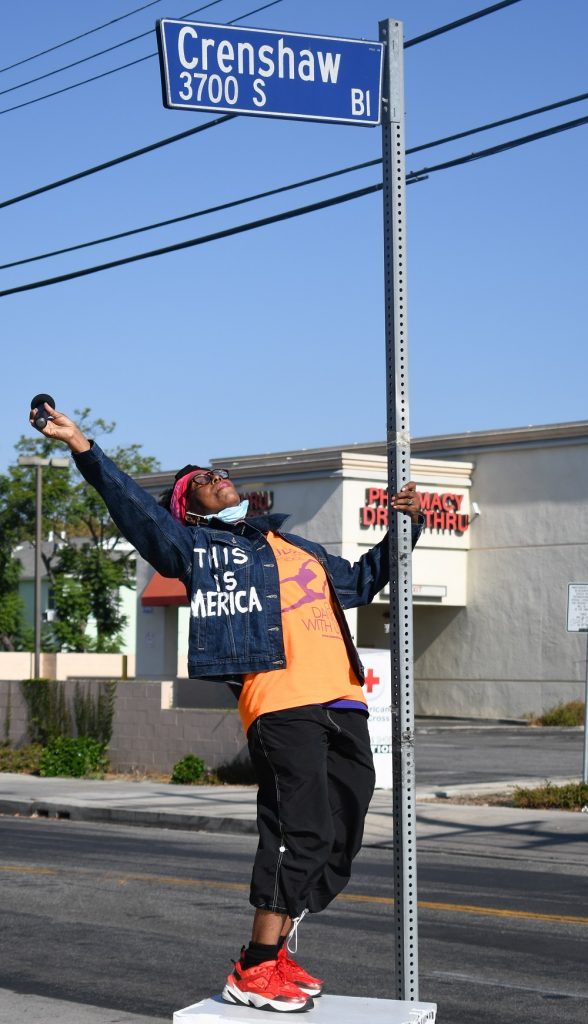
Lula Washington in “Lift Every Voice” choreography by Lula Washington & Jamica Washington-Miller – – Lula Washington Dance Theater – Photo courtesy of LADC
Lula Washington is a living icon in Los Angeles and along with her daughter, Tamica Washington-Miller, has created a powerful dance of protest titled Lift Every Voice. Washington appears as the central figure of this film, speaking the words of poet James Weldon Johnson that she has reimagined for this piece. Filmed in a parking lot lined by a muraled wall, Washington uses a microphone to deliver the message that Black Lives Matter, telling everyone to vote, to stop racism, and to end modern day lynching via police brutality. All around her, the talented members of the Lula Washington Dance Theater perform the two women’s movement of protest, ending with the now familiar Black Power salute. This work is strong, it is current and its message should be heeded.
The dancers included Quron Clarks, Danny Guerarro Kozue Kasahara, Ongelle Johnson, and David Mitchell. The Director, composer and percussionist was Marcus L. Miller.
The next piece on the program was Drift – Inner Landscape choreographed by Deborah Brockus, Artistic Director of BrockusRED and performed by the gorgeous dancer Julienne Mackey to music by Peter Askim. The cinematography by Patrick Mignano, Hurricane Deck Productions and the set of white material draped over furniture, aided greatly to give this dance the feel of the attic of one’s mind. It appeared as a black and white movie although it was not that. The title Inner Landscape speaks directly to the psychological aspect of this work by Brockus. I felt as if I was looking into the memories of the character and feeling her emotions. Mackey’s performance was stunning. She presented the woman’s feelings without emoting but spoke to us through the movement.
The word “chakra” refers to spiritual energy points within the human body and there are seven of them along the spine, neck and to the crown of one’s head. The 7 Cs (Chakras) was clearly choreographer John Castagna’s maiden voyage into creating on Zoom. The movement was primarily yoga positions representing the 7 Chakras of the meditative body with each performer in the safety of their home. Castagna also did not make much effort to title each section: Intro introduced each position, Unison featured the dancers moving in unison, Female Duet was exactly that, and so on. This piece did not rise to the level of work that should be featured on a professional dance festival.
The dancers who did their best were Stephanie Cheung, Khilea Jessup, Emily Pavelka, Ottavio Taddei, Alaya Turnbough, Rein Short, and Taylor Unwin. The music was by Johnathan Kaner with basic black costumes by Anda Bernovska.
From the video, Girl appeared to be a dance that I would genuinely enjoy seeing in person. Choreographed by Jesse Lee Thorne of Poets in Motion, Girl investigates a young woman’s search for self-identity minus all the stereotypical examples shouted at her each and every day via family and social venues. This version of the work suffered from the editing of a longer work pared down to fit the festival’s format, poor video quality and being forced to view the piece through the choices made by the cameraperson. In spite of its flaws, however, there was enough of Thorne’s work that bled through these obstacles to see that it was well made and performed. I hope to see this dance when we all find ourselves back inside “brick and mortar” venues.
The excellent performances were delivered by Dani Scaringe, Elizabeth Fingfield, Caroline Smooth, Carolina Beachwood, Kat Sauma, and Jesse Lee Thorne. The music was by Erin Mara, Norwegian singer/songwriter Jenny Hval, and Icelandic hip-hop band Daughters of Reykjavik.
Louise Reichlin, Artistic Director of Los Angeles Choreographers & Dancers has been making dances since the 1970s. For the festival, Reichlin has taken a recording of her performing an earlier solo titled Alone and with the aid of technology, cleverly superimposed four other similar solos to create Alone 2020. The work features five women living alone in separate tents. It is a work with multiple layers of meaning considering the homeless situation throughout this country, the separation we all feel during the pandemic and the dependency we have to our telephones.
The dancers were Kohl Lewis, Jill Elaine Collins, Eve Metsaranta, Corrina Gemignani, and Louise Reichlin. The music was by Roberto Musci and Giovanni Venosta, and the costumes were by Linda Borough.
The second dance film to suffer from the process of editing a full-length dance into a shorter dance film was Drawing Memories choreographed by Korean artist Ji Hee Lee. Performed in a large space with a beautiful painting and Installation by Ji Yeon Lee that covered on entire wall and the floor, I got the feeling that this was also a psychological look into someone’s thoughts or fragmented memories of past events.
The editing was sometimes jarring, jumping from one section to the next without logic. My sense of the work being fragmented may be a result of this process, but the emotionality of the work was clear. The figure in silhouette, a woman standing paused at a lit doorway, dancers pulling up tape that was part of Ji Yeon Lee’s installation, and a descending spinning box with the only colored light shining brightly, all brought this psychological aura into view. I longed to see the original work by Lee.
The dancers in Drawing Memories were Jae Hyeok Choi, Su Bin Kang, Yun Jung Jang, Geo Wook Lee, Jae Heon Gwon, Hyeok Jung Yoon, and Ji Hee Lee. The Stage Design and Direction was by Seung Jae Jung, Lighting Design and Director was by Hwan Heo, the Camera Director was Ground Zero Pictures, and Video Editing was by Ji Hee Lee.
LADF 2020 performances conclude this coming weekend with all new works on Fri., October 23rd. and The Luckman’s Favorite Choices on Sat.-Sun., October 24 & 25. To view the performances on those dates, click HERE.
To visit the LADF website, click HERE.
To learn more about the Luckman Fine Arts Complex, click HERE.
To visit the Korean Cultural Center, Los Angeles website, click HERE.
Written by Jeff Slayton for LA Dance Chronicle.
Featured image: Syncing choreography by Camryn Eaks and MarieElena Martingano – Photo courtesy of LADF

